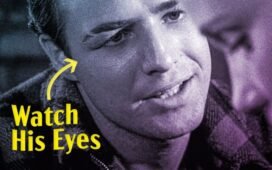In 2006, David Foster Wallace published a piece in the New York Times Magazine headlined “Roger Federer as Religious Experience.” Even then, he could declare Federer, “at 25, the best tennis player currently alive. Maybe the best ever.” Much had already been written about “his old-school stoicism and mental toughness and good sportsmanship and evident overall decency and thoughtfulness and charitable largess.” Less easily commented upon — because much less easily described — was the aesthetic transcendence of his performance on the court, which Wallace thought best witnessed in person.
“If you’ve watched tennis only on television, you simply have no idea how hard these pros are hitting the ball, how fast the ball is moving, how little time the players have to get to it, and how quickly they’re able to move and rotate and strike and recover,” Wallace writes. “And none are faster, or more deceptively effortless about it, than Roger Federer.” Was that one of the observations the champion had in mind this past weekend, eighteen years later — and two years after his own retirement from the game — when he took the tree-stump lectern before Dartmouth’s class of 2024 and declared that “Effortless is a myth”?
That was one of three “tennis lessons” — that is, lessons for life derived from his long and hugely successful experience in tennis — that Federer lays out in the commencement address above. The second, “It’s only a point,” is a notion of which it’s all too easy to lose sight of amid the balletic intensity of a match. The third, “Life is bigger than the court,” is one Federer himself now must learn in the daily life after his own “graduation” that stretches out before him. For a man still considered one of the greatest players ever to pick up a racket, is there life after professional tennis?
Federer acknowledges the irony of his not having gone to college, but choosing instead to leave school at sixteen in order to devote himself to his sport. “In many ways, professional athletes are our culture’s holy men,” Wallace writes in another essay. “They give themselves over to a pursuit, endure great privation and pain to actualize themselves at it, and enjoy a relationship to perfection that we admire and reward.” But when their athletic careers inevitably end, they find themselves in a greatly heightened version of the situation we all do when we come to the end of our institutionalized education, wondering what could or should come next.
Clearly, Federer doesn’t suffer from the kind of inarticulacy and unreflectiveness that Wallace diagnosed over and over in other professional athletes about whom he wrote. In profiling player Michael Joyce, for instance, Wallace saw that Joyce and his colleagues lived in “a world that, like a child’s world, is very serious and very small” — but which Federer has long displayed an uncommon ability to see beyond. Still, as he must know, that guarantees him a satisfying second act no more than even world-beating success in any given field guarantees any of us general well-being in life. Wallace, too, knew that full well — and of course, he was no mean commencement speaker himself.
Related content:
Animations Revive Lost Interviews with David Foster Wallace, Jim Morrison & Dave Brubeck
Marcel Proust Plays Air Guitar on a Tennis Racket (1891)
30 Free Essays & Stories by David Foster Wallace on the Web
Bob Dylan and George Harrison Play Tennis, 1969
Medieval Tennis: A Short History and Demonstration
Based in Seoul, Colin Marshall writes and broadcasts on cities, language, and culture. His projects include the Substack newsletter Books on Cities and the book The Stateless City: a Walk through 21st-Century Los Angeles. Follow him on Twitter at @colinmarshall or on Facebook.















